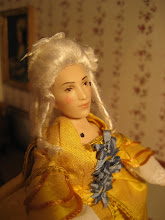Pysytään leivässä. Joulupöytää koristaa erilaisista leivistä tehty leipäkeko. Pällimmäisenä on pakanuuden ajalta periytyvä toukoleipä. Se leivottiin jouluksi mutta syötiin vasta keväällä toukotöiden alkaessa. Se säilytettiin viljalaarissa toukotöiden aloituspäivään asti, jolloin leipä jaettiin kylväjien ja hevosten kesken, jotta se toisi muassaan hyvän sadon. Sitä heitteiiin pellollekin jatkuvuuden symboliksi. Alimpana oli säätyläisten juhlalimppu eli setsuuri. Leipien koko ja lukumäärä pinossa osoittivat ennen myös talon varakkuuden. Joulupöydässä koko pyhien ajan seisovan leipäkeko imi itseensä salaisia voimia ja energiaa sekä edisti hedelmällisyyttä.
Let's stay on bread. The Christmas dinner table is decorated by a bread tower. On top is so called sowing bread oginating already from the pagan times. It was baked for Christmas and stored in a cereal bin until the spring sowing when it was shared between men and horses to bring a good crop and part of it was even thrown to a field to symbolise the continuity of bread. Underneath of other bread types was the feast bread "setsuuri". The size and number of loaves showed the wealth of the house. The bread tower was kept on the table during the whole Chistmas time. It was believed to draw secret strenght and energy to itself and foster fertility. 





Ei kommentteja:
Lähetä kommentti